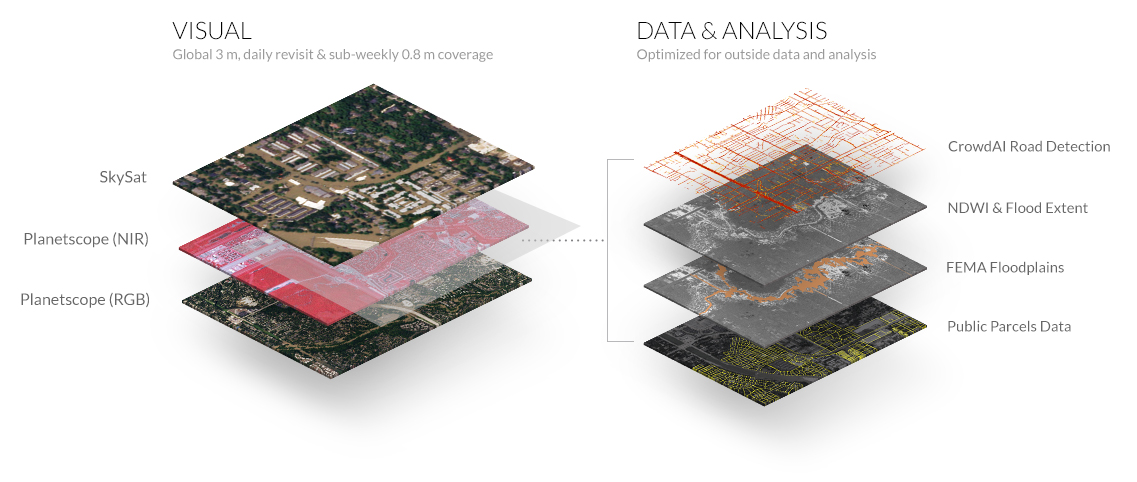Storms happen suddenly. Disaster occurs slowly.
As Hurricane Harvey approached Texas, predictions of its potential damage to cities along the Gulf of Mexico were serious. At Planet, we began collecting and reviewing the most recent cloud-free imagery of the region. We knew that when the clouds parted there would be a need for pre- and post-storm satellite imagery and analysis.
Following the 180 billion dollar disaster, we have a better understanding of how governments, insurers, and first responders can use insights from imagery to improve risk analysis, relief efforts, and emergency preparedness with frequent data.

Planet’s daily monitoring of at-risk flood regions across the globe creates an up-to-date picture of localities that enable emergency management before, during, and after the disaster.
Frequent imaging enables insurance companies, local governments, and emergency relief groups to better model risk and improve response preparedness. Our fleet of medium and high resolution satellites provide daily insights on the impacts to industry, infrastructure, and residential and commercial property.
Houston: The perfect storm for a megaflood

Flooding on the outskirts of Houston, Texas, August 31, 2017 (Photo credit: South Carolina National Guard)
Modern-day Houston has grown into a man-made hazard for a mega flood. Beginning as a small settlement along the banks of the Buffalo Bayou, Houston has morphed into the 4th largest metropolis in the United States. Decades of rapid development, combined with the region’s low elevation and unique geography, have made the city vulnerable to extensive flooding.
Rainfall animation from the Integrated Multi-Satellite Retrievals for GPM (IMERG) courtesy of NASA Earth Observatory.
Acquired August 25 - 28, 2017
Hurricane Harvey: a once-in-a-millenium flood
Making landfall near Corpus Christi on August 25, Harvey battered Texas shores with 100+ miles-per-hour gusts and surging seas. When it was all over, Harvey would release unprecedented amounts of rainfall—over 50 inches in some areas–causing major flooding in Greater Houston.